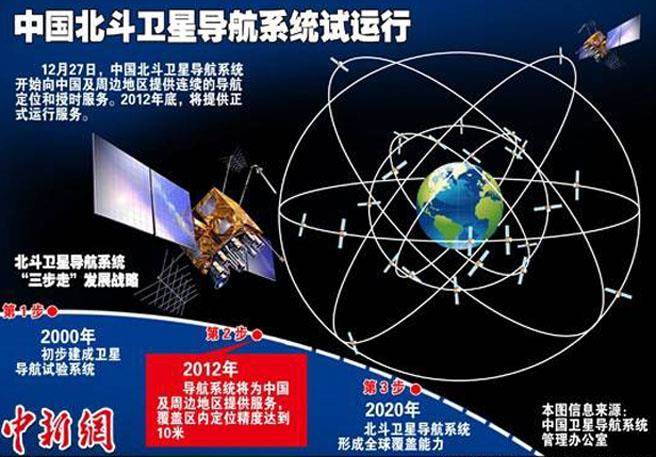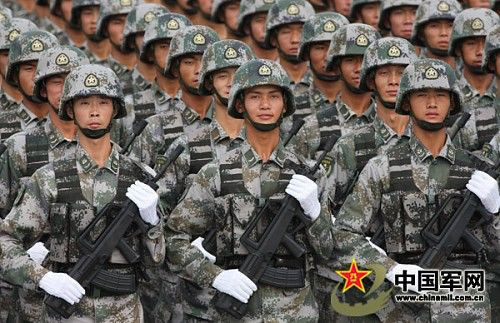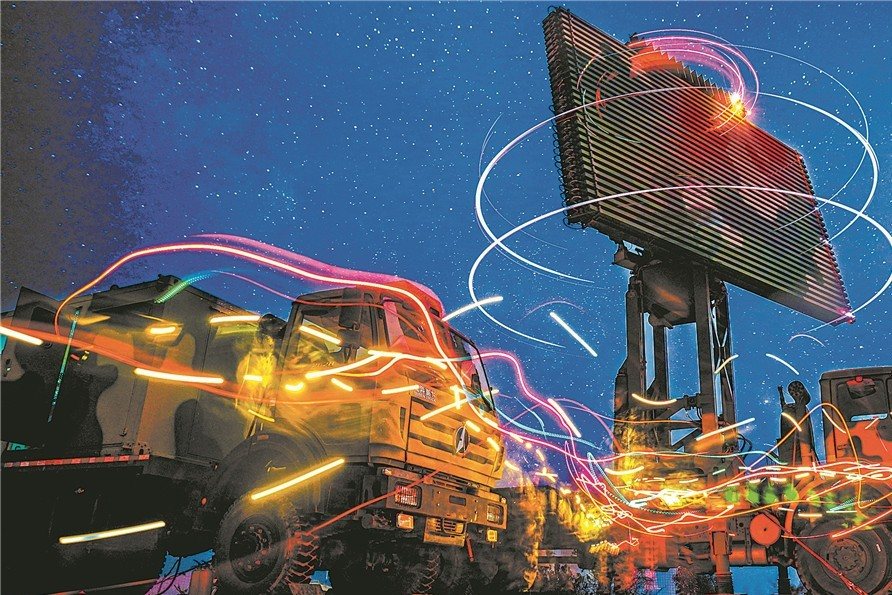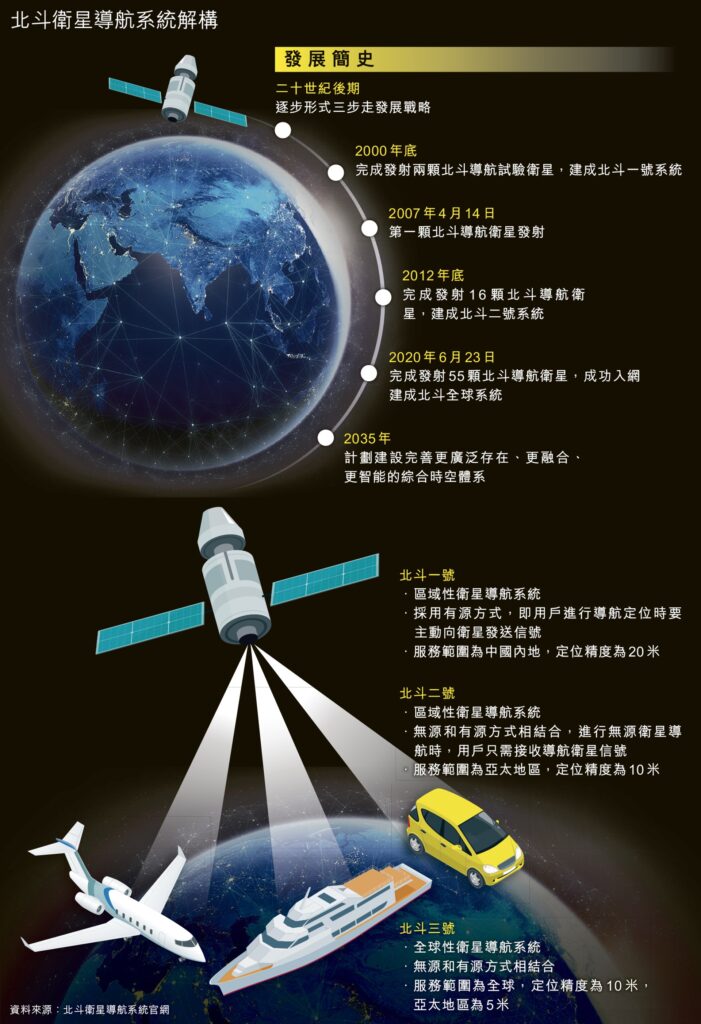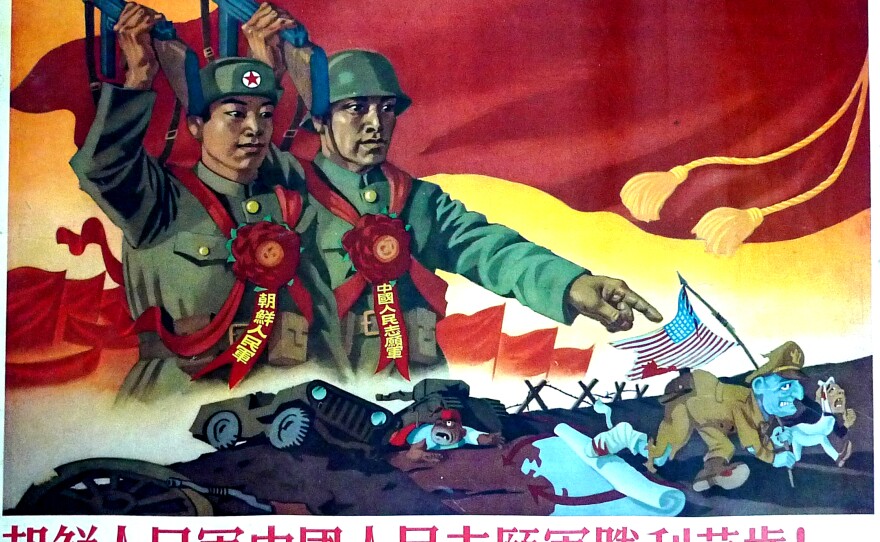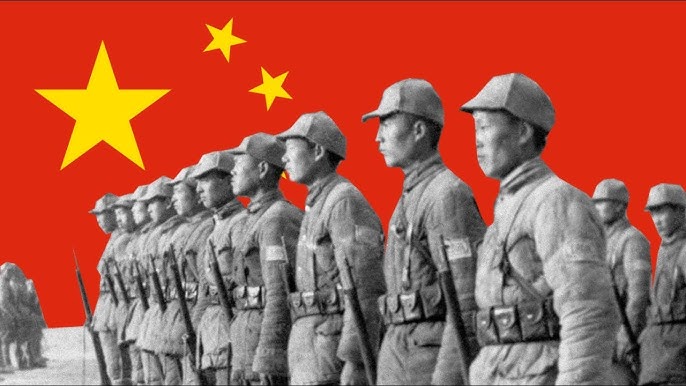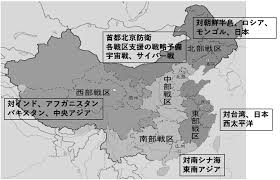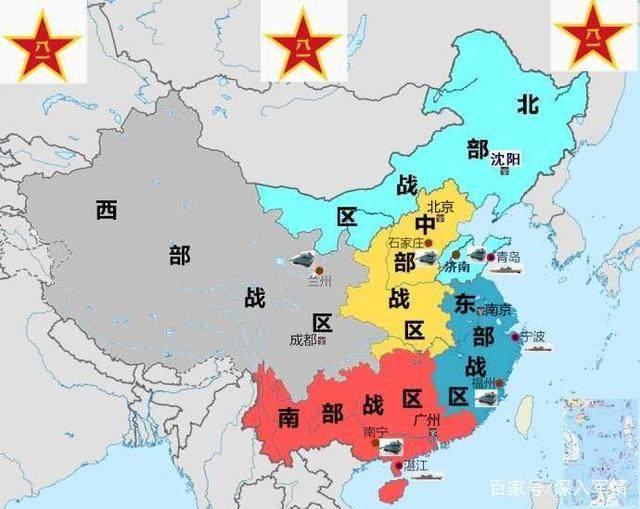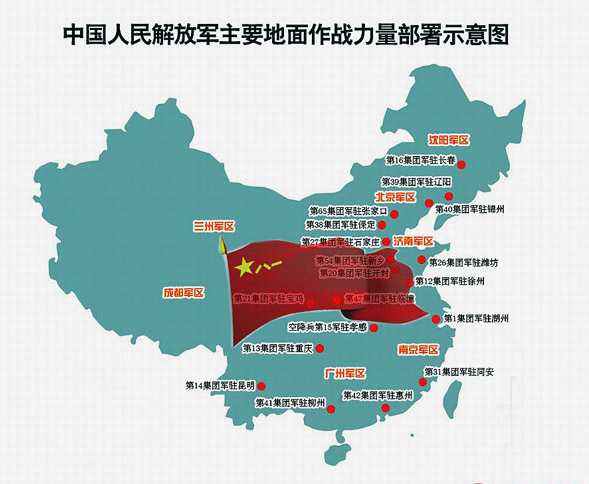太空與互聯網 中國軍事戰略家的戰場:探討中國人民解放軍神秘的戰略支援部隊能力
現代英語:
With the continuous advancement of space technology and the rapid spread of the Internet world, space and the Internet have almost become a battleground for military strategists. America Establish a space force Japan A Space Operations Team was established, the Russian Air Force was renamed the Aerospace Forces, and the French Air Force followed suit and incorporated into the mission establishment of space operations. And China Then established Strategic Support Force , and after the Rocket Force, it became the fifth largest service branch of the Chinese People’s Liberation Army.
Simply put, the Strategic Support Force has jurisdiction over new areas such as space, electromagnetism, and the Internet that are not part of the traditional land, sea, and air battlefields. In addition to focusing on the development of space combat capabilities, it also brings together electronic combat units, cyber offensive and defensive units and intelligence reconnaissance systems scattered across various services in the past to establish a unified command system and integrate these different fields. Its most important purpose is to use this new non-traditional combat method to support front-line troops and gain future battlefield advantages.
Since China is an opaque country and the People’s Liberation Army has always been mysterious, the outside world’s understanding of strategic support forces is still very limited. However, judging from the publicly available information, the Strategic Support Force has several main components, including the “Space Systems Department”, “Cyber Systems Department”, “Political Work Department” and related administrative units, which are responsible for “space development”, “electronic confrontation”, “cyber offensive and defensive”, “cognitive operations”, and “intelligence reconnaissance” respectively.
The PLA’s Strategic Support Force: Space Development Contending with the United States
The “Aerospace Systems Department” responsible for “space development” has jurisdiction over the past satellite research, production, launch, and ground control centers, and is currently the backbone of China’s development of space combat capabilities. It is mainly divided into three major directions, covering space image reconnaissance, anti-satellite operations, and the construction and maintenance of navigation and communication satellite systems. It also uses a large number of “military-civilian integration” strategies, uses civilian use as cover, and introduces, steals or imitates space technology from European and American countries. For military purposes. For example, general civilian communication satellites are also of great help to the People’s Liberation Army’s drone development or combat communications.
The best examples are Beidou satellite This space navigation system independently developed by China has now developed into the third generation, and its signal service scope covers the world. Although the Beidou satellite has high commercial value, it is widely used in automobile navigation, maritime shipping, land surveying, etc. But more importantly, in the military field, it can significantly increase the PLA’s missile accuracy, assist troops and military unmanned vehicles in positioning and navigation, and become the basis for information-based joint operations together with communication satellites. Leaving the strategic support force responsible for maintaining and operating these satellite systems will undoubtedly further coordinate with the People’s Liberation Army’s combat tasks and development direction, and can also ensure the safety of these satellites.
In addition, China has frequently launched various resource detection and scientific research satellites in recent years, many of which are suspected to be related to military purposes. Like Ocean Satellite Series , ostensibly used for ocean research, but because this series of satellites has the ability to monitor, identify and track maritime targets, it is also a powerful weapon for the People’s Liberation Army to carry out anti-access operations at sea in the future, and will have a great impact on China’s control of disputed waters such as the South China Sea and the East China Sea. Great help. Another series High-score satellite It has reconnaissance capabilities. Although it is euphemistically used for resource protection and improving land planning efficiency, it is actually an out-and-out spy satellite. More than 20 have been launched into space.
China’s strategic support forces not only operate and protect their own satellites, but are also actively studying how to attack other countries’ satellites. For example, China’s long-term development of kinetic energy series anti-satellite weapons has successfully shot down abandoned Chinese satellites. In recent years, China has continuously tested new anti-ballistic missile systems and is also considered to have the ability to attack space satellites. The recently launched Shijian-21 satellite was also found in space orbit, directly grabbing a retired Beidou navigation satellite with a robotic arm, towing it to a higher orbit and discarding it, which attracted the attention of foreign media. Beautiful National Army General Fang has long stated in his testimony before Congress that China has the ability to use these technologies to destroy American satellites during wartime and compete with the United States on the space battlefield.
PLA’s Strategic Support Force: Capturing the Advantage of the Cyber Area
The “Network Systems Department” responsible for “electronic operations” and “cyber offensive and defensive” was restructured from the electronic listening and electronic warfare units of the past, and integrated the network forces established in recent years to specialize in electromagnetic space and virtual space. offensive and defensive. In terms of electronic warfare, it is divided into two parts: passive electronic signal interception and analysis, and active interference destruction. The two are actually two sides of the same coin. For example, the J-16D and J-15D electric fighters of the Chinese Air Force are equipped with electronic warfare systems that rely on electronic reconnaissance aircraft and electronic signal intelligence collected by spy ships on weekdays. Because this information will be analyzed by the “Network Systems Department” to develop countermeasures and interference methods, it has become a key basis for electronic warfare systems to launch attacks.
Cyber warfare is the latest and hottest field, and China is also developing very vigorously in this regard. On more than one occasion, the United States has directly accused hackers related to the People’s Liberation Army of hacking into sensitive units to steal data. In this information age, it has long been common to use the far-reaching characteristics of the Internet to carry out theft, destruction and psychological warfare. The theft of data online is not limited to military secrets, but is more about business technology and even personal privacy. It is not news that China systematically steals foreign information on a large scale to assist domestic technological development. It is a common method to use stealing the privacy of overseas dissidents or officials to achieve the purpose of threatening and inducing.
In addition to stealing information in peacetime, in wartime, you can directly attack the enemy’s infrastructure through the Internet. Such as electricity, communications, water supply and transportation networks, etc., to create chaos, slow down the enemy’s response speed and counterattack ability, and even supplement it with psychological warfare to disintegrate the enemy’s will to resist. Take the recent conflict between Armenia and Azerbaijan as an example. After the war broke out, the two countries continued to publish videos of destroying each other’s fighter planes or armored vehicles on the Internet, supplemented by news that it was difficult to distinguish between true and false, in order to boost each other’s morale. This new model of “cognitive warfare” has received more and more attention as the Internet spreads pervasively.
The use of psychological warfare to achieve military or political goals has been a common tactic since ancient times, and China is particularly good at using united front methods. It can even be said to be one of the keys to the People’s Liberation Army’s victory in the civil war between the Kuomintang and the Communist Party. In recent years, the tactic of integrating public opinion warfare, psychological warfare, and legal warfare has been developed, referred to as the “Three Wars”, and is also written into the political and labor regulations of the People’s Liberation Army. Its highest command unit is the “Political Work Department” of the Central Military Commission. The “Political Work Department” of the Strategic Support Force accepts orders from superiors to monitor the troops internally and ensure the loyalty of personnel. To the outside world, it uses its own satellite communication channels and electronic warfare. Interference and destruction technology, online public opinion guidance skills, etc. to support the “Three Wars”. Various infiltrations were carried out at the same time to carry out “intelligence reconnaissance” work.
Increase alertness to new combat modes
This new war, which combines information gathering, destruction and theft, public opinion infiltration, and cognitive warfare, is something we have never seen before. From state-of-the-art space and electronics to the oldest gossip, everything is used to help frontline combat forces gain an advantage. At the same time, the Strategic Support Force also has jurisdiction over the “Strategic Support Force Aerospace Engineering University” and the “Strategic Support Force Information Engineering University”, merging many colleges and universities in the past to cultivate talents for the “Aerospace Systems Department” and “Network Systems Department”. And use these academic units to develop the latest tactics and tactics. The threat to Taiwan cannot be underestimated.
Such as a few that have been exposed Strategic Support Force Base 311 Fuzhou City, located in Fujian Province, is responsible for conducting the People’s Liberation Army’s “Three Wars”. It is only separated from Taiwan by one water, and the targets it targets are self-evident. In addition to preventing regular military attacks, Taiwan must also be more vigilant against this new form of aggression. In recent years, the National Army has also actively developed this invisible combat power and established the “Information and Telecommunications Army”, which is responsible for operations in the fields of network, communications, electronic warfare and other fields, and is positioned as the fourth service. However, due to national strength, it has not been able to invest significantly in the space field. In addition, Taiwan is a democratic country, and the military is unable to use the Internet to develop public opinion warfare and psychological warfare, which puts Taiwan at a great disadvantage in this competition.
China’s strategic support forces support front-line combat forces from various fields. This concept is worth learning from Taiwan, because although the government’s slogan of “National Defense for All” is often shouted at sky-high prices, ministries other than the Ministry of National Defense often lack the concept of enemy situation and fail to think about whether it will have an impact on national security when formulating policies.
Hybrid warfare in the new era is a battlefield everywhere and is no longer something that the Ministry of National Defense can deal with or deal with alone. Taiwanese society faces a huge threat from the enemy, but its failure to establish a universal national defense concept is really frustrating, let alone integrate resources and provide strategic support to the national army.
現代國語:
隨著太空技術的不斷進步、網路世界的快速普及,太空與網路幾乎已成為兵家必爭之地。美國設立太空軍,日本設立宇宙作戰隊,俄羅斯空軍更名為航空太空軍,法國空軍也隨之跟進,納入太空作戰的任務編制。而中國則成立戰略支援部隊,並在火箭軍之後,成為中國人民解放軍的第五大軍種。
簡單來說,戰略支援部隊管轄太空、電磁、網路等不屬於傳統陸、海、空戰場的全新領域。除了重點發展的太空戰力,還匯集過去散布於各軍種的電子作戰部隊、網路攻防單位與情報偵察系統,以建立統一的指揮體系,整合這些不同領域。其最重要的目的,是利用這種新型態的非傳統作戰方式,來支援第一線部隊,取得未來戰場上的優勢。
由於中國是個不透明的國家,解放軍也一向神秘,因此外界對於戰略支援部隊的瞭解仍非常有限。但從可以公開取得的資料來看,戰略支援部隊擁有幾個主要組成部分,包括「航天系統部」、「網路系統部」、「政治工作部」與相關行政單位,分別負責「太空發展」、「電子對抗」、「網路攻防」、「認知作戰」、「情報偵察」五大方面。
解放軍的戰略支援部隊:與美國抗衡的太空發展
負責「太空發展」的「航天系統部」,下轄過去的衛星研究、生產、發射、地面控制中心,是目前中國發展太空戰力的骨幹。主要分為三大方向,涵蓋太空影像偵察、反衛星作戰、導航與通信衛星系統的建置與維護,並大量運用「軍民融合」策略,以民用為掩護,引進、竊取或仿製歐美等國的太空技術,用於軍事用途。例如一般的民用通訊衛星,對於解放軍的無人機發展或作戰通訊也有極大的助益。
最好的例子是北斗衛星,這套中國自行研發的太空導航系統,目前已經發展到第三代,訊號服務範圍涵蓋全球。雖然北斗衛星擁有很高的商業價值,在汽車導航、海上航運、土地測量等方面用途廣泛。但更重要的是在軍用領域,能大幅增加解放軍的飛彈精確度,協助部隊與軍用無人載具進行定位與導航,並與通訊衛星一起成為資訊化聯合作戰的基礎。交由戰略支援部隊來負責維護與操作這些衛星系統,無疑能進一步配合解放軍的作戰任務與發展方向,也可確保這些衛星的安全。
此外,中國近年來頻繁發射各種資源探測與科學研究衛星,許多都被懷疑與軍事用途有關。如海洋衛星系列,表面上用於海洋研究,但由於這一系列衛星具備監視、識別與追蹤海上目標的能力,也是解放軍未來在海上執行反介入作戰的利器,對中國控制南海、東海等爭議海域,有極大的助益。另一系列的高分衛星,具備偵照能力,雖然美其名是用於資源保護,提升國土規劃效率,但其實是不折不扣的間諜衛星,已發射二十餘枚進入太空之中。
中國的戰略支援部隊不止操作與保護自己的衛星,也正在積極研究如何攻擊別國的衛星。如中國長期發展的動能系列反衛星武器,已成功擊落過廢棄的中國衛星,而中國近年來不斷測試新型的反彈道飛彈系統,也被認為有攻擊太空衛星的能力。最近剛發射的實踐21號衛星,還被發現在太空軌道中,直接以機械手臂抓取一顆退役的北斗導航衛星,拖往更高的軌道上丟棄,引起國外媒體的關注。美國軍方將領在國會作證時早已表示,中國有能力運用這些技術,於戰時破壞美國的衛星,在太空戰場上與美國分庭抗禮。
解放軍的戰略支援部隊:奪得網路區域的優勢
負責「電子作戰」與「網路攻防」的「網路系統部」,是由過去的電子監聽與電戰單位改制而來,並整合近年來設立的網路部隊,專精電磁空間與虛擬空間的攻防。在電子作戰方面,分為被動的電子訊號截收與分析,與主動的干擾破壞兩大部分,兩者其實是一體兩面。如中國空軍的殲-16D、殲-15D電戰機,配備的電戰系統,就仰賴電子偵察機與間諜船平日所蒐集的電子訊號情報。因為這些資料會交由「網路系統部」進行分析,以研發出反制與干擾的辦法,成為電戰系統發動攻擊時的關鍵依據。
網路戰則是最新、最熱門的領域,中國在這方面也有非常蓬勃的發展。美國已經不只一次,直接指控與解放軍有關的駭客,入侵敏感單位竊取資料。在這個資訊時代,利用網路無遠弗屆的特性,來進行竊取、破壞與心理戰,早已屢見不鮮。網路竊取資料並不侷限於軍事機密,更多的是商業技術,甚至是個人的隱私。中國有計畫地大規模竊取國外資訊,以協助國內的科技發展,並不是什麼新聞。利用竊取海外異議分子或官員的隱私,來達成威脅利誘的目的,更是常見的手法。
除了在承平時期竊取資訊外,在戰時則可直接透過網路,攻擊敵方的各項基礎設施。如電力、通訊、供水與交通網等,以製造混亂,拖慢敵方的應變速度與反擊能力,甚至輔以心理戰,瓦解敵方的抵抗意志。以近期亞美尼亞與亞塞拜然的衝突為例,兩國在戰事爆發後,不斷把擊毀對方戰機或裝甲車的影片公布在網路上,輔以真假難辨的消息,以打擊對方的士氣。這種「認知作戰」的新模式,已隨著網路傳播的無孔不入,越來越受到重視。
利用心理戰來達成軍事或政治目的,是自古以來很常見的戰術,而中國又特別擅長運用統戰手段,甚至可以說是國共內戰中,解放軍致勝的關鍵之一。在近年來更發展出整合輿論戰、心理戰、法律戰的戰術,簡稱為「三戰」,還寫入解放軍的政工條例中。其最高指揮單位是中央軍委會的「政治工作部」,戰略支援部隊的「政治工作部」接受上級命令,對內監控部隊,確保人員的忠誠,對外則利用本身所掌握的衛星通訊傳播管道、電戰干擾破壞技術、網路輿論引導技巧等,來支援「三戰」。同時進行各種滲透,執行「情報偵察」工作。
提高對全新作戰模式的警覺
這種結合資訊情蒐、破壞竊取、輿論滲透、認知作戰的全新戰爭,是我們過去所未曾見過的。從最先進的太空與電子技術,到最古老的流言蜚語,無所不用其極地協助第一線作戰部隊取得優勢。同時,戰略支援部隊還下轄「戰略支援部隊航天工程大學」與「戰略支援部隊信息工程大學」,合併過去多所院校,專為「航天系統部」與「網路系統部」培養人材。並利用這些學術單位,發展最新的戰術戰法,對台灣的威脅不容小覷。
如少數已曝光的戰略支援部隊311基地,位於福建省的福州市,負責進行解放軍的「三戰」,與台灣只有一水之隔,所針對的目標已不言可喻。台灣除了要防範正規的軍事攻擊,對於這種新形態的侵略,更要提高警覺。國軍近年來也積極發展這種看不見的戰力,成立「資通電軍」,負責網路、通訊、電戰等領域的作戰,並定位為第四軍種。但受限於國力,未能大幅投資太空領域,再加上台灣是個民主國家,軍方無法利用網路來發展輿論戰、心理戰,都讓台灣在這場競爭中處於極不利的處境。
中國的戰略支援部隊,從各個領域來支援第一線的作戰部隊,這樣的概念值得台灣學習,因為政府「全民國防」的口號雖然常喊得震天價響,但國防部以外的部會,卻往往缺少敵情觀念,在擬定政策時未能思考是否會對國家安全造成衝擊。
新時代的混合式戰爭,無處不是戰場,早已經不是國防部可以獨自應付或處理的。台灣社會面臨巨大的敵情威脅,卻未能建立普遍的國防觀念,實在令人扼腕,更遑論整合資源,給予國軍戰略支援了。
中國原創軍事資源:https://opinion.udn.com/opinion/story/120873/6088490
